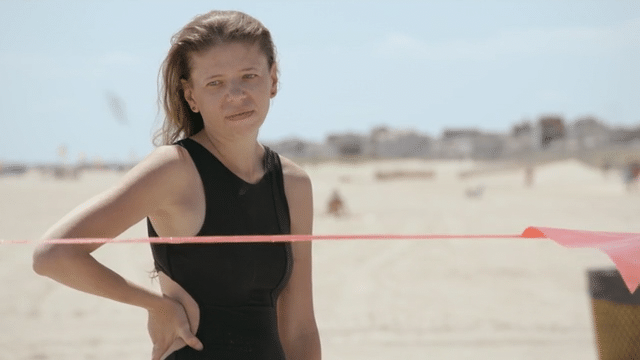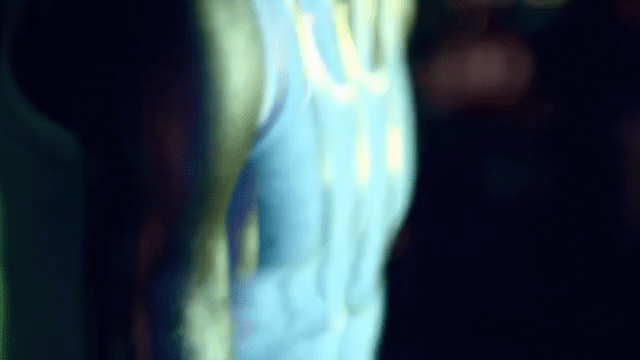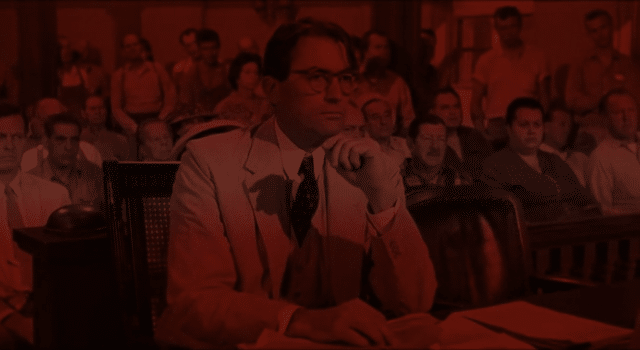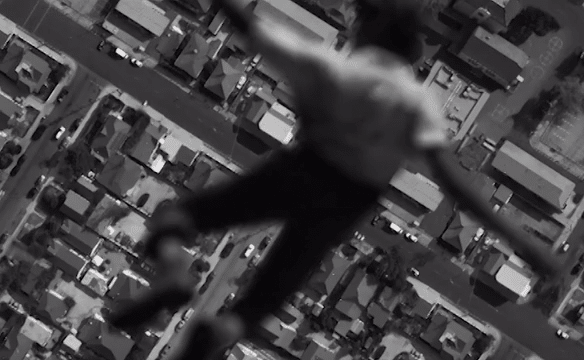Character Limit
Sable Elyse Smith, Brett Story, and Travis Wilkerson with Alexandra Juhasz
In their “Beyond Story” manifesto, scholars Alexandra Juhasz and Alisa Lebow argue for a documentary culture that moves beyond projects that rely upon two things: 1) a small number of recognizable characters around whom feelings are generated, primarily by way of identification and humanistic empathy, and; 2) the arrangement of these characters’ actions through a set of recognizable spatio-temporal templates whose cause-effect logic does not remotely resemble reality as it is experienced. This dominant mode of cinematic storytelling—developed to serve commercial interests—privileges the individual over the collective, people over their environments, human will over systemic forces, feelings over analysis, and passivity over action.
On February 1, 2019, the first of four panels prompted by “Beyond Story” was held at UnionDocs Center for Documentary Art in Brooklyn, NY. Artists Sable Elyse Smith, Brett Story, and Travis Wilkerson screened and discussed excerpts from their recent work, examining how and why their practices subvert the formal and political logics of character-driven storytelling. Presentations by each of the artists were followed by a discussion moderated by Alexandra Juhasz.
Brett Story
I’m delighted to be part of this conversation, which I think is a really important one for thinking against the conventions and the consensus—such as the idea that story is paramount, or that intimate, main characters are necessary to hold audience attention—that have come to define or constrain a lot of documentary artwork. I was trying to think about how I might start some brief comments and I landed on Margaret Thatcher; in particular, something that she is famous for having said almost forty years ago. In 1982, just a couple of years after she became Prime Minister of Britain, she declared, “There’s no such thing as society. There are only individuals and there are families.” And this was just before she went to privatize a whole slew of key national industries, break the labor movement, defeat striking coal miners, sell off public housing units, and usher in an era of a particular kind of capitalism that gets called “neoliberalism.”
The reason that I wanted to start with that, in thinking about the limits for character-driven story form, is that I do think there is such a thing as society. Certainly the documentary films of Agnes Varda, or Frederick Wiseman, or Peter Watkins speak to that, as they are all filmmakers deeply interested in the social fabric and societal institutions through which “individuals” are formed and must contend. And yet we seem to have lost this interest in the social, the societal, and forms of cinema that can express it, in so much contemporary work, especially North American work. I find myself concerned in particular about the ways in which much work that leans hard on the character-driven form can end up reinforcing this idea that there is no such thing as a society. Instead it reinforces the idea that all we are is a series of individuals or that the individual is the primary or the most important unit driving all drama and anything of consequence in the world. And I do think that that focus, within our cinema, compounds the ways in which this discourse of individualism—the idea that we are all just a set of self-contained entrepreneurs who must realize our individual destinies or make change vis-à-vis individuated will and action—becomes increasingly entrenched as the governing common sense of our political imaginaries.
We have seen how that idea has played out as a slew of policies in the world. And I think when we replicate it in our cultural works it does actual damage in how we think about ourselves and where we put blame and how we think about the consequences of what feels like failure. Certainly, in my own work on the US prison system, for example in my film The Prison in Twelve Landscapes, one sees this expressed in the governing and disciplining effects of the “personal responsibility” discourse: the idea, internalized by many, that crime is attributable to personal choices (rather than social limits and structures of power) and that redemption, and often, actual freedom, is contingent on criminalized people “taking responsibility” for their “bad choices.” I sought in this film to construct a representation of the prison that transcends or transgresses this frame, first by making a film about incarceration that’s not about crime at all, and secondly by demonstrating how the prison system belongs and functions as an institution of the existing social order, not an institution consequent to any individual behavior or actions.
A lot of my work tries not to be driven by central characters or protagonists with individual struggles because this undermines the ways in which intimacy and value can be gleaned outside the psyche of individual protagonists and their struggles. In particular, I think about the role of strangers—how encounters with strangers in real life often make up one’s worldview, one’s social life, and yet get consistently undervalued in how films tend to express ideas. Brief encounters with strangers are considered much less than character arcs in terms of how a film constructs a narrative. In contrast, when I make films, I’m very interested in the filmmaking process as an occasion to not just get to know one particular character in totality, but rather to have brief encounters with a set of strangers. For me, that feels true to what it means to go about a life. It also helps me understand the value of what is to be learned from those encounters. I think intimacy and sympathy are very important—and I use the word sympathy deliberately, as opposed to empathy—and can be created not just through a dive deep into one particular individual, but instead by staging encounters with a diverse network of people that compose a space or society. When I say sympathy, I mean it as Hannah Arendt meant it: something other than friendliness, or pity, but rather a condition of mutual concern aroused as one loses the power of self-definition. It somehow seems more honest as something cinema can achieve than actually “feeling as another feels” through the screen, which I don’t think occurs or has as much effect as many would want to believe.
Excerpt from THE HOTTEST AUGUST, Brett Story (2019).
I’ve been describing my new film, The Hottest August, as a film about climate change that is disguised as a portrait of collective anxiety. It is at once about climate change but climate change is also in many ways absent. We shot every single day for one month in one city. It happened to be New York and so the film is entirely made up of conversations we had with people we met and things that were happening. If it has characters at all, then it has thirty of them. And the animals are characters and so are the landscapes. It relates to the Margaret Thatcher quote because the originating point of this film was an interest I had in not just climate change as something we need to debate about in terms of its existence or consequences, but what it means to live with the reality of a foreboding future in ecological and political terms. And what does it mean to live with forty years of this dictate that there is no such thing as a society? How does that translate in terms of the power people feel or don’t feel in their own lives? The film as a whole is about checking in on how we are coping with forty years of the destruction of this thing we call society, and where that leaves us in this moment in which we’re faced with something as totalizing as human-caused planetary collapse.
Sable Elyse Smith
I make videos, objects, and texts. I’m not exactly dealing in documentary but there are overlaps and affinities that can be spoken about. My formal attention is rooted in a poetic fragmentation and repetition, the collage in the landscape of memory, and the tension between narrative and non-narrative. The video work has a relationship to experimental cinema and an engagement with cinematic syntax. But I’m invested in boundary dissolution and a seamless shift from position to position, context to context, and frame to frame, and a kind of messiness.
That boundary dissolution sort of slips over into a dissolution of character. For me, what is character if not an evidence of accumulation or evidence of textures which have left an imprint? The protagonist always lies when the camera is focused on their lips, even if they don’t want to. The eye shifts, the nervousness seeps in, they want to veil something, the body compels. Or there is an active relationship between the character and the spectator. There are lies that are already being created in our assumptions and labels. What is the picture of a person if not a picture of their surroundings? I’m interested in a kind of detritus. As it erodes, as we fall, we start to see things.
I’ve never been interested or invested in the idea of character. Even in my writing practice, there are things that resemble a traditional form. Sometimes it may take up the first person position as a default. Reading the word or the letter “I” and forming the mouth to pronounce it creates a type of intimacy. And I’m more interested to work in that intimacy and then kind of ripping it apart or creating a sort of refusal in a way that makes things more complicated. The real work for me is in the details and the information. It is also in the sensations that are described or the interiors that are rendered, and what collides within them. And those are the things that I’m thinking about and the worlds that I am trying to create in video work and in the work that extends beyond that in a sort of cacophonous, multiplicity of stories.
Even in my art practice, the things that become more of an influence are the literary world and thinking about poetry. If you think about a poem, sometimes it can be prose or narrative, but each line of the poem is creating an image and there is a sort of reverberation in the space in between each of those lines that are building up to a ghosting image. And that’s the thing that I’m thinking about when making video: the space that is in between an image that I might give you and a type of reference that you might locate. Then the next image sort of destabilizes it or deconstructs the knowledge or the kind of narrative that you thought you were holding onto before.
My 2017 video Men who swallow themselves in mirrors is one part of an ongoing series that is somewhat of a collaboration between me and my father, who is telling very colorful stories on video. My practice making this video is an amalgamation of found footage, footage that I shoot, and footage that my father shoots. It creates an interesting conversation. Sometimes, all the context is relevant and sometimes it’s not. It’s just the way the video starts to take shape and take on a life of its own.
Excerpt from MEN WHO SWALLOW THEMSELVES IN MIRRORS, Sable Elyse Smith (2017).
Travis Wilkerson
When you think about storytelling, you’re really dealing with two different things because character-driven storytelling doesn’t correspond with the conventions or rules. Think about it for a second. Think about the last time you were at a bar and you struck up a conversation with someone next to you and they were a charming storyteller and they captivated you in some way. And when you think about that story, it doesn’t correspond to any of the notions that we have about storytelling. No one that’s telling you a story at a bar is doing it in a three-act structure, right? That’s never the case! So why do we have this notion that that is storytelling? The reason that we have that notion is from commerce. It’s so that stories can be packaged and they can be sold and they can be profitable. So, in fact, the structures of storytelling that we now embrace as conventions or as the rules, that’s a word that’s often used—rules—there’s no rules at all, they’ve become a dogma. And they’ve become a dogma that expresses something profound, which is that a system that is criminal, a system that is vicious, a system that is abusive, has triumphed. And we live in that system. So in fact, the conventions that have merged from that system recapitulate all of those notions.
Okay, so how do we confront this? To me, the very conventions themselves affirm the abuse that accompanies the system. The stories about the triumph of oppression live in conventions that are the expression of this triumph of oppression. A satisfying narrative about the triumph of oppression is an affirmation of that oppression, an inscription of that oppression. The only way that we can possibly combat and resist is to find a different set of conventions where the notions that we have about those stories fall apart. I first encountered this when I was working in my hometown in Montana. I was learning how to be a filmmaker at this point. I was feeling my way. And what I realized was that the very absence of specific documentation that would explain the events of that story in a clear, coherent way was a deep expression and articulation of the oppression that had triumphed in that town. So the absence of closure was an expression of opposition.
Excerpt from DID YOU WONDER WHO FIRED THE GUN?, Travis Wilkerson (2017).
My most recent project deals with the horrific involvement of my family in the lives of other people in Alabama, in particular Black people. This project became a much more pressing case because not only is there this question that I’m raising about what this convention represents, and its significance, but in fact the very act of my making a film about this and the circumstances under which I did, the recognition I got for it, is all an expression of the triumph of that oppression. Because my capacity to make that film is an expression of that, right? That oppression has triumphed. So, what I tried to do is to figure out a way I can establish a set of conventions and then I can rip them to shreds, to make that point as powerfully as I could.
Alexandra Juhasz
You talked to us about ripping things to shreds and things falling to pieces but you do stay coherent. I’d like to know about the coherence of the subject in relationship to your projects. Do you find or even want your voice to be coherent or your subject to be coherent? Travis, do you, as the person who receives and is hoping to challenge the privilege of white male oppression?
TW
I think it’s simultaneously an attempt at coherence and a kind of embrace of a natural incoherence of the oppression itself. It isn’t a natural order of things, it’s a disastrously unnatural order.
AJ
I think it’s simultaneously an attempt at coherence and a kind of embrace of a natural incoherence of the oppression itself. It isn’t a natural order of things, it’s a disastrously unnatural order.
SES
For me, a lot of the work is interrogating or thinking about and talking about violence, and not particularly images of the kind of catastrophic or capital “v” violence that we think about, that sort of proliferate in the media. Although some of that is there, I’m interested in the things that might be a little bit imperceptible or illegible or invisible, or the things that can’t be named and their accumulation over time. I’m also thinking about the carceral space. My father is incarcerated and that’s a part of the dynamic of the video. Those are specific subject positions that we can label but there isn’t any coherence in understanding how they operate as systems, how they operate in society, and the assumptions or the way that we take and accept them as conditions that just are, that we have to sort of navigate around and within, depending on your proximity. In that regard, creating something that is linear is uninteresting to me but also inadequate and ridiculous because it actually doesn’t address or begin to articulate what is happening. And so, I’m interested in the poetic for a number of reasons. It is a more adequate set of conditions or parameters to reference, to be able to unpack something that we are used to accepting but not understanding the language around it, or not tapping into the real language that starts to unravel what is so deeply embedded.
BS
I guess it partly depends on what is meant by coherence, but my first impulse is to say that I resent the obligation and expectation of coherence, at least in the sense of something tidy, linear, or without contradiction. Coherent narratives are just not true to life or to people. Similarly, I feel like it’s more honest to encounter people in both states, their seeming incoherence and the insight that can be gained from acknowledging that, and also taking that on as an adequate representation of experiences of reality and of actual reality. I don’t know if people in the room saw this amazing multimedia performance installation The Head and the Load, by William Kentridge at The Armory. In the notes to the program, he starts off with two questions: “Can we glean truth from fragmentation? Can we tell history through collage rather than narrative?”
I think the expectation that history can be described in coherent terms is also its downfall. The expectation that people are ever more than the messy incoherence that makes up the effort to make sense of the world and live in the world and live in structures and institutions sets us up for both disappointment and false narratives. So, I’m more interested in what seems incoherent, but therefore actually expresses reality, and the kind of insights that come out of that—insights that we will also, therefore, as audiences have to work harder for.
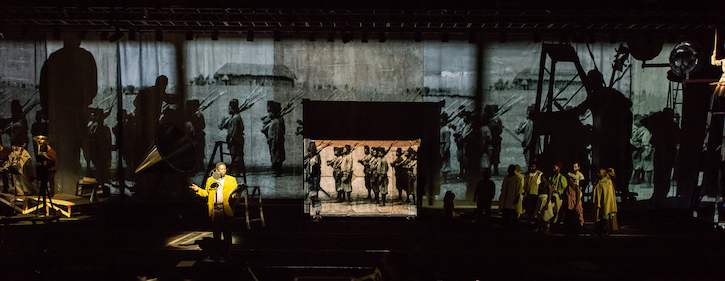 Figure 1. THE HEAD AND THE LOAD, William Kentridge (2018).
Figure 1. THE HEAD AND THE LOAD, William Kentridge (2018).
AJ
One of the things that goes when characters and stories are not driving documentary is that there is more time for us to see form; there’s space for form to take our attention. I’d like to hear each of you talk about your cutting practices, your editing.
BS
The Prison in Twelve Landscapes was an attempt to explore the broader geographies and structural roots and consequences of the US prison system. I used a very formalist mode for that film and I think it was partly out of not just a desire to foreground form and to think about the prison as an architecture of disappearance but also a system that relates to other structures and systems of oppression and containment, foremost being racial capitalism, but subsequently also including processes and regimes like gentrification, private property, wage labor. The problem for me was also to try to tell the story of mass incarceration so it does not end up being so neat as to not be useful. We tell the story of mass incarceration most often as a so-called problem of crime. To describe it in more historical and expansive terms in relation to structures of race and class and gender and all the other things it’s related to is so expansive that formalist techniques help me give limits to open up space for thinking. So that film is organized structurally in the form of twelve vignettes and the form is just a means. I try and think of form as a way for limits in the editing process to liberate the content.
SES
Speaking of incoherence or coherence, if I’m able to actually walk you into my mind, there are a couple of things that are important to me: language, and the sonic quality of it, and also music. When I think about creating moving images, the kind of things that are guiding me have to do with rhythm and a type of physicality for the audience. We just screened this video, but it can also operate in an exhibition space. When it’s set up there, I have parameters around sound actually having a physicality and moving through and running through the body. This was installed in a museum and there were all these subwoofers around, so you feel the bass. Even the lowest registers. That becomes important to me to think about: how the body is physically shook and forced to register the work. In conventional modes of filmmaking, music is used to manipulate and create affect. Those are things that I use as a convention and sort of play against.
TW
I definitely don’t take a theoretical approach to the editing process. I find it very visceral. But I always have a couple of goals. I love this notion that linearity is ridiculous; of course it is. I spent a lot of time researching the Sand Creek Massacre in Colorado in 1864. That’s a very specific historical event in which a group of Cheyennes and Arapahos who had signed a series of legal agreements with the territorial governments of Colorado were told that they should camp in a certain place and they should raise a white flag over the village and they should raise an American flag over the village. And if they did, they would be protected over the Sand Creek. In fact, it was a strategy by the territorial government to localize them so they could massacre them. When I was researching that, every time I would talk to people that were descendents of this experience, they would tell me that my concept of past and present was false. It was an entirely European concept and it didn’t correspond with anything that articulated their experience. And they said this over and over again.
This is where linearity comes to my mind. Look at the Sand Creek Massacre as a contemporary event. It’s a contemporary event because it is why we live the way we live, it is why our education is what it is, it is why our health is the way it is, it is why we have so many social problems in our community, it’s why we don’t have opportunities. It is an ongoing contemporary event. And this really shook me as I tend to establish things in a linear sense and I realized this was an utterly absurd concept. So when I’m editing, I’m usually trying to express in my films that compression of time.
AJ
If you’re not working so hard to have an empathetic relationship to a compelling person then the frame can hold other things. And one of the things that you’re all working with is time and a more complex holding of time. Not just linear. Present and future and a sense of co-temporality in yours, Brett. Between people and the world, Sable. And you’ve got this ancient story that’s about your great-grandfather and time, Travis. Can you talk about the frame holding time?
BS
The Hottest August is such a hard film to say what it’s about, which I hope is a good thing. But it’s certainly about how we live with futurelessness. So, the very foreclosure of time becomes the problem to be investigated. I want to investigate it through the realities and narratives of people who are living in the present. I try to do so in a way that will allow the film to be read now in a certain way but also have a life, and new insights to be gleaned, in the future. When we were filming we filmed every day for one month. Part of the approach was to think about what it would be like to make an archive film where we are creating the archive now, and offering it to ourselves to examine ourselves through in the present. We’re not waiting sixty years to have hindsight. So time becomes this sort of the mindfuck through which we are already trying to both edit the film and figure out what kind of questions to ask the people in the moment.
When I start my films, often it’s just that I’m trying to figure out something about how I’m dealing with the world and I’m testing it in relation to other people: is it just me or is there something collective in this experience? I’m trying to sort out dread. Is there something about the dread I feel now that’s collective? Am I not alone in its grasp? When I was talking earlier about neoliberalism I was thinking also about the way in which it reduces us to solitary individuals, and how our power is reduced in turn. Thinking about time and this project is very complicated because the question becomes: how do we live now and how do we live differently now if the future feels like something that doesn’t exist in the same terms as it might have? Does that reorient ourselves and our relations to each other in the present?
TW
If we live in a society that is a product of catastrophic violence and continues to recapitulate that catastrophic violence, then every landscape expresses that. So I’m always trying to find a strategy that allows you to look at that landscape long enough that you see traces of it.
SES
This question of time is a difficult one. My video is one in a series made in collaboration with my father, who is incarcerated. He was experiencing a very different condition of time than I experience. Some of those things are latent, under the surface, kind of ghosting there. But there’s a type of simultaneity of historical references, linguistic histories, images, labels, and assumptions that are operating in the video. And there is a reference to memory that is kind of fleeting. But I don’t know if a focus or meditation on time is what’s at stake for me. It’s more about trying to present these spaces where one is questioning, by the repetition and the type of familiarity of an image that is skewed just enough where it feels familiar, or feels like déjà vu, but you can’t quite locate it and I take that away. There’s this kind of seduction and refusal that is operating. Obviously it’s a sort of time-based document, so there is this rhythm that the body sort of falls into and time becomes forgotten in that space. But then when you leave, you’re like, I don’t know what the fuck just happened to me. Or, what am I supposed to do with that? Do I know what those images are? Do I question what my assumption of that thing was?
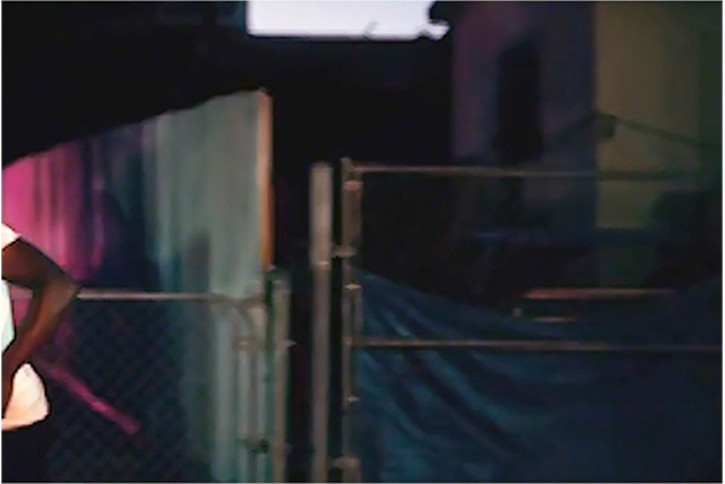 Figure 2. HOW WE TELL STORIES TO CHILDREN, Sable Elyse Smith (single channel video, 2015).
Figure 2. HOW WE TELL STORIES TO CHILDREN, Sable Elyse Smith (single channel video, 2015).
AJ
This is about what you want your work to do to your audience. You left us with this question of audience members saying “what just happened to me?,” which is certainly not what we are asked when we employ the current model of documentary with a narrative structure and a beloved character (or a hard character or an interesting character) that we are going to take an emotional ride with. By the end of it, it’s resolved and we understand that cathartic experience we have had with them. And then we leave. That’s not happening in any of these films. What are you hoping is happening unto your audience in relationship to their viewing experience? We’ve been using the word incoherence but I don’t imagine that’s the right word and I don’t think your films are incoherent.
TW
I think the word catharsis is an important one and if I was to make again a film that was about the triumph of oppression that was cathartic, it would be disastrous. The catharsis would be the absolute betrayal of my value system.
AJ
So do you want us to leave with a feeling or a thought or a question?
TW
Yes, all of those.
BS
My favorite experience with any kind of work is the sense that it can’t be over when it’s over. So first and foremost, when I make a work I want it to leave an afterimage or an insight, its own continuity in the form of conversations people have to have at dinner afterwards or in things that they are puzzling over in their minds. I’m interested in how a work precipitates, and particularly how it might precipitate reconfiguring some of the categories that soothe us and that we rely on too much to make sense of the world. And to put those into question so we can begin to find better ways to understand the realities that we are already acquainted with. It’s not just like I want to make work that puts truth into question, I have pretty strong points of view in the projects I make, but I do try to do something within my projects that reframes the terms with which we even think and talk at all. So I tried to make a film about the prison system that’s not about crime, but about structures of power, and that absolutely dislodges the centerpiece of how we describe and think about and make sense of the prison system because that story is a soothing story that helps legitimate that system. The Hottest August is a film about climate change but also, really, about capitalism. It tries to circumvent the questions normally asked of climate change, like “is it bad?,” “is it good?,” “is it happening fast?,” “is it happening slow?” Rather, it’s a film about how we relate to each other and on what terms and through what orders of power and exploitation we can be a society that can even have climate change, can have the wholesale destruction of the means of our own survival.
SES
Likewise for me, I think this idea of afterimages is important. I’m more interested in privileging affective knowledge as opposed to a sort of intellectual knowledge. Creating work that is activating local experience, or locating something in the body first. You know you have a feeling about something: what is this about? What are these images? My goal with the work is to think about not only new language but also new structures of syntax. I think it moves or shakes these rigid structures or types of language and types of conversations that we have around certain subjects.
Background Video: Men who swallow themselves in mirrors (Smith, 2017) / The Hottest August (Story, 2019) / Did You Wonder Who Fired the Gun? (Wilkerson, 2017).


